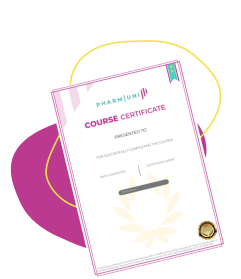EU MDR Certification
Definition
EU MDR Certification refers to the formal process by which a medical device manufacturer demonstrates compliance with the European Union Medical Device Regulation (EU MDR 2017/745) in order to obtain CE marking and legally market their devices in the EU. This certification is granted by a Notified Body after a thorough conformity assessment process.
Detailed Explanation
The EU Medical Device Regulation (EU MDR) came into effect on May 26, 2021, replacing the previous Medical Device Directive (MDD). The regulation introduces stricter requirements for medical device safety, performance, and post-market surveillance. Obtaining EU MDR certification is a mandatory step for manufacturers wishing to sell medical devices in the European Economic Area (EEA).
Purpose and Importance
The purpose of the EU MDR certification process is to ensure that medical devices placed on the EU market are safe, effective, and meet high standards of quality. The MDR emphasizes a lifecycle approach to product safety, requiring manufacturers to maintain continuous compliance through post-market surveillance and vigilance activities.
Steps in the MDR Certification Process
The MDR certification process involves several critical stages:
- Device Classification: Determine the correct classification of the medical device (Class I, IIa, IIb, or III) based on risk level.
- Quality Management System (QMS): Implement a QMS compliant with ISO 13485 and MDR requirements.
- Technical Documentation: Compile comprehensive technical documentation, including clinical evaluation, risk management, and labeling.
- Conformity Assessment: Undergo assessment by a Notified Body (for Class Is, Im, Ir, IIa, IIb, and III devices).
- CE Marking: Upon successful assessment, affix the CE mark to the product, indicating compliance with MDR.
- Post-Market Surveillance: Implement systems for ongoing monitoring, reporting, and corrective actions after the product is on the market.
CE Marking Under EU MDR
MDR CE marking is the final step in the certification process. It signifies that the device meets all applicable EU requirements and can be marketed across EU member states. The CE mark must be accompanied by the identification number of the Notified Body for higher-risk devices.
Examples and Contexts of Use
Examples of devices requiring EU MDR certification include:
- Implantable devices such as pacemakers and orthopedic implants (Class III)
- Diagnostic imaging equipment (Class IIb)
- Software as a Medical Device (SaMD) used for diagnostic purposes (Class IIa or higher)
- Reusable surgical instruments (Class Ir)
Manufacturers must adapt their documentation and processes to meet MDR standards, including updating clinical evaluation reports, risk-benefit analyses, and labeling to reflect new requirements.
Challenges in MDR Certification
Many manufacturers face challenges such as:
- Limited availability of designated Notified Bodies
- Increased documentation and clinical data requirements
- Longer timelines for conformity assessment
- Significant resource investment for compliance
Despite these challenges, MDR certification is essential for maintaining access to the European market and ensuring patient safety.



